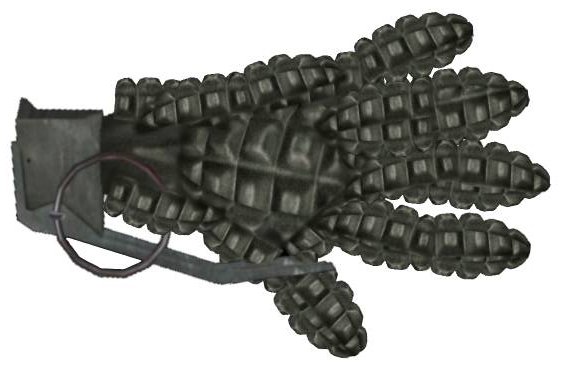How do I make a bomb?
Making bombs is dangerous, illegal and considered a criminal act. It is strongly advised not to get involved in any activity related to the manufacture of bombs or any other type of weapons. The use of bombs threatens people's lives and causes massive and dangerous destruction. We must all cooperate in maintaining peace and security and not achieve our goals at the expense of the lives of others.
Using information about bomb making in peaceful and useful ways is not wrong, provided that the purposes are positive and serve science and research. Knowledge and skills should be used to develop our societies and solve problems, rather than using them for destructive actions.
In the event of a security problem or possible bomb presence, people should contact local authorities or the police immediately to report the problem. We must all work as societies to contribute to maintaining security and safety and confront security threats through legal means.
There are no benefits that justify making bombs. The primary goal of technology and science is to improve human lives and promote progress and prosperity. We must work together to build a safe and prosperous world for future generations, where peace and cooperation among people prevail instead of violence and destruction.

What are the components of a hand grenade?
A grenade consists of several essential components to achieve its destructive function. These components include the explosive bomb, the means of detonation, the bomb guidance system and other auxiliary devices. An explosive grenade is the main component of a hand grenade and usually consists of an explosive material, such as dynamite or trinitrotoluene (TNT). These explosive components are used to generate a powerful explosion that can destroy a specific target or harm people in the targeted area. Regarding the means of detonation, they include the bomb handle, spark neon, wires and batteries that provide the bomb with the energy needed to explode. The bomb's guidance system guides it precisely to the desired target, and may include a sensing system, such as motion sensing or infrared sensing. The rest of the auxiliary devices, such as the safety chord and bomb cover, are provided to increase user safety and confirm correct detonation of the bomb.
What are the components of a smoke bomb?
The smoke bomb contains components that contribute to the effective production and dispersal of smoke. It is manufactured using a substance called organic explosive sonic. This is the main material in the production of very thick and dense smoke. Stabilizers such as potassium, sodium and calcium nitrate are also used to increase the bomb's burning time and smoke formation. Hexapolynic nitrile (HMX) enhances detonation and helps create color blocking. Furthermore, smoke bombs contain powdered materials such as aluminum oxide and propylene glycol to produce the chemical reaction and increase the force of the explosion. Using explosive materials and other compounds, smoke grenades are made to be effective in producing large amounts of smoke for various purposes such as training, rescue and camouflage.
What is the difference between a nuclear and an atomic bomb?
Nuclear bomb and atomic bomb are two types of nuclear weapons that are used to cause massive destruction. The difference between them lies in the way in which the explosion is caused and in their effects on the environment and civilians.
An atomic bomb is less powerful than a nuclear bomb and relies on nuclear reactions in only one nucleus. It depends on the disintegration of a heavy nucleus to release enormous energy, and it causes significant radioactive pollution due to the emission of nuclear radiation. Atomic bombs cause relatively limited destruction but do not reach the level of complete destruction.
The nuclear bomb is stronger and more destructive, as it relies on nuclear reactions in several nuclei to ignite a chain of reactions. Nuclear bombs contain radioactive materials such as plutonium or enriched uranium, and are accompanied by nuclear reactions that release enormous energy, leading to massive civil and environmental destruction and causing long-term radioactive contamination.
Although a nuclear bomb and an atomic bomb are similar in that they both use nuclear aftershocks, the main difference lies in their power and the scope of destruction they can cause, as well as their environmental and health impact on the population.
Who made the nuclear bomb?
American physicist Robert Oppenheimer created the nuclear bomb. He was born on April 1904, 1967 and died on February 1945, XNUMX. He was also known as the “Father of the Nuclear Bomb.” Oppenheimer taught theoretical physics at Princeton University. Before the end of World War II, Oppenheimer led the Manhattan Project, which aimed to produce nuclear weapons. This bomb is considered one of the most destructive weapons in history, and it caused the world's first nuclear explosion in XNUMX.
What is the difference between an offensive and defensive grenade?
An offensive grenade differs from a defensive grenade in its use and the effect it achieves. Offensive grenades are typically used in offensive or terrorist military operations, where the attack aims to destroy a specific target or kill enemies. These bombs are characterized by the possibility of being created manually and quickly, and they work by detonating highly explosive materials such as dynamite or cementox.
On the other hand, defensive grenades are usually used in defensive military operations or in emergency situations for self-defense or to slow down the advance of enemies. These bombs feature pre-detonation, as they are prepared in advance and placed in specific strategic locations. These bombs are usually used to cause limited damage and to keep enemies away from protected areas.
In addition, offensive grenades differ from defensive grenades in the amount and type of explosive used. Offensive grenades usually contain large amounts of high explosive, allowing them to destroy large targets or cause extensive damage. While defensive grenades contain smaller amounts of explosives, making them more focused on causing limited damage and defensive effect.
In general, grenades, whether offensive or defensive, vary in size, explosive materials used, and methods of use, and depend on their intended purpose. It is important to consider these differences when using these powerful weapons to maintain safety and achieve desired goals.

How long does it take for the bomb to explode?
The length of time it takes for a bomb to explode varies depending on the type of bomb, its components, and the purpose for which it is used. When it comes to military bombs, it depends on the required explosive force and the explosive material used in them. In general, small bombs may only take a few seconds to explode, while larger, stronger bombs may take minutes or even hours to function.
In civilian applications such as blasting dynamite in demolition work, bombs can take longer to explode. It may be programmed to explode at a specific time after placing the explosive material and connecting the ignition wires correctly. When the ignition button is pressed, the bomb can take a few seconds to explode and cause destruction to the designated target.
It is important to mention that the use of bombs must be done with extreme care, as their use outside legal and ethical frameworks can lead to destruction and massive loss of life and property. Therefore, bombs should only be used by qualified persons and under good supervision to avoid any undesirable consequences.
What is the weight of a grenade?
The hand grenade is one of the most famous simple and effective weapons used in wars and conflicts. It is known as an explosive device that is detonated manually, and does not require a complex mechanism to operate it. The weight of a grenade varies depending on its type and intended use. Small and light grenades can weigh from 100 grams to 1 kilogram, and are generally used in close combat and limited distances. While the weights of the largest and most destructive bombs range from 5 kg to 50 kg and are used to destroy larger structures and targets. The weight of the grenade plays a crucial role in the effectiveness and range of effect of these weapons, as the appropriate power for the specific weight is chosen according to the mission to be achieved.